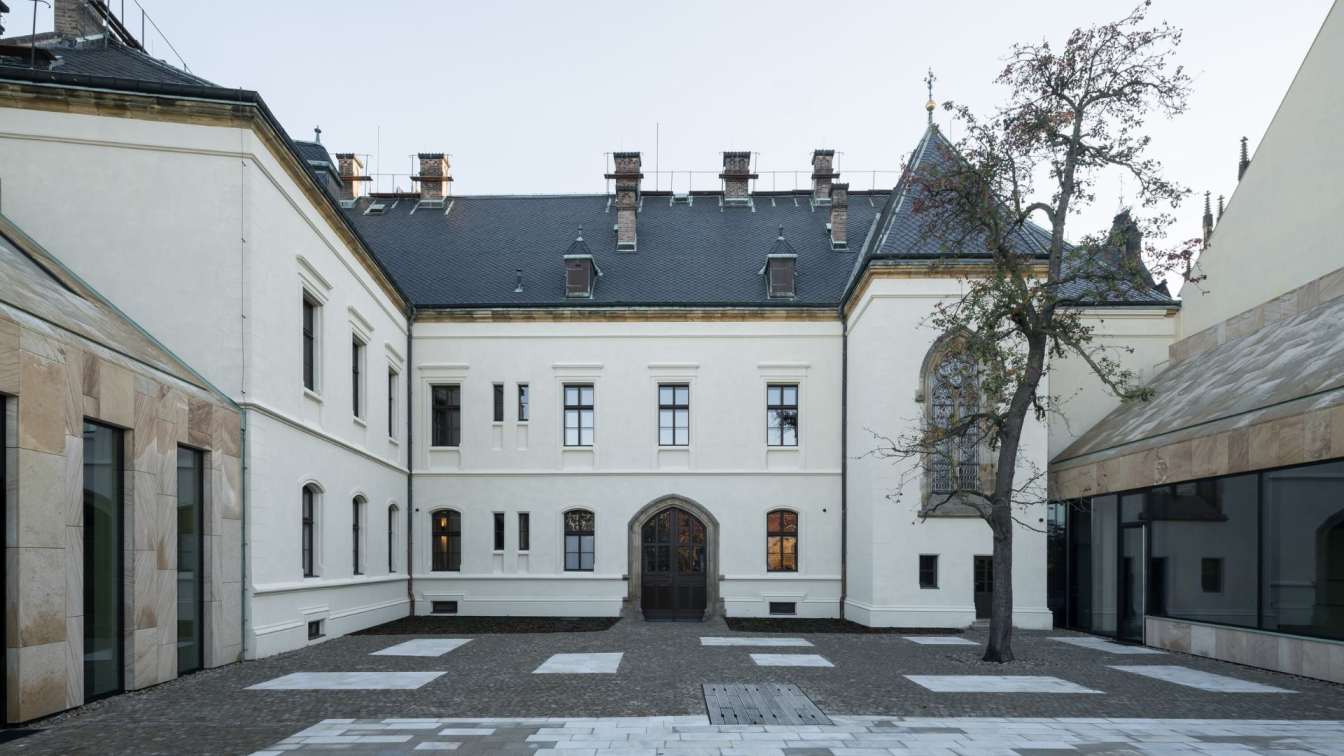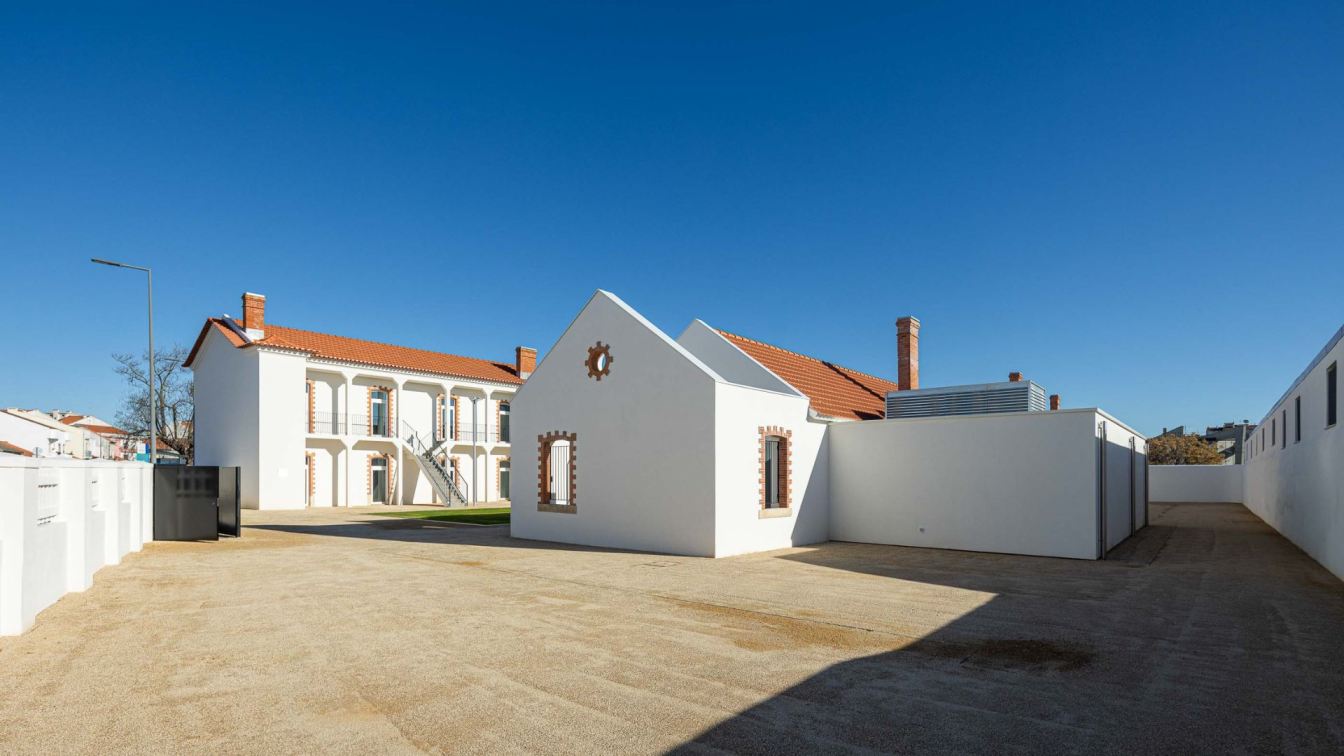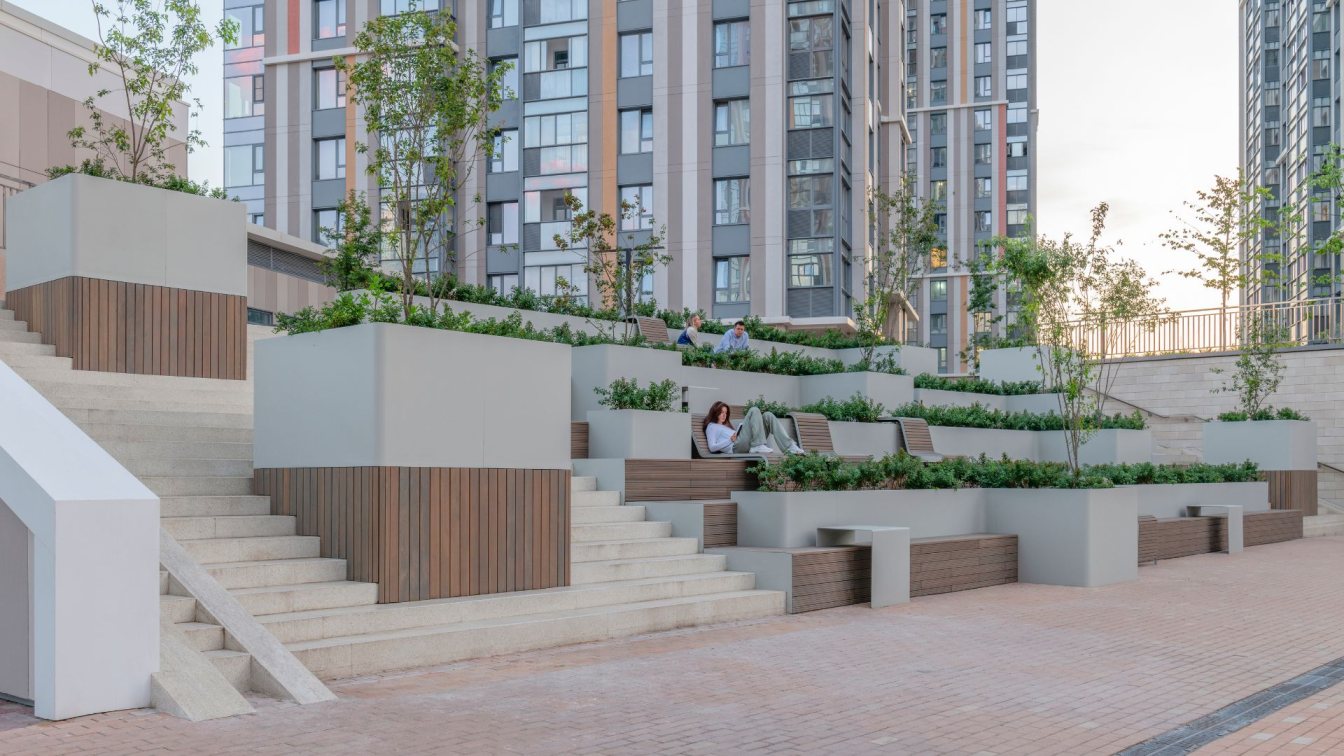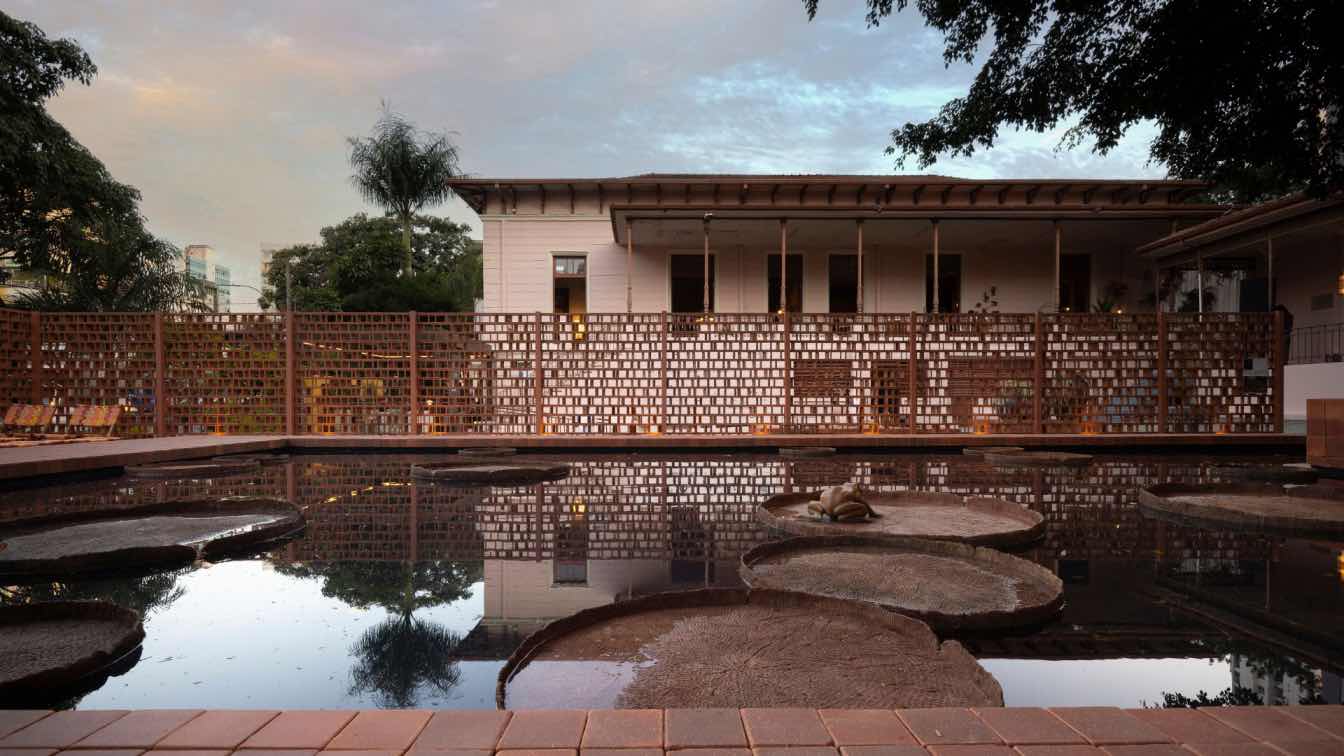Studio acht: The New Provostry is a historical building from 1877, built in the neo-Gothic style, adjacent to St. Vitus Cathedral in the heart of Prague Castle. Originally intended as the residence of the provost, the building was confiscated in the early 1950s and has largely remained abandoned since then. During the communist era, the courtyard and associated outbuildings were completely destroyed, and the main building was used as barracks for construction workers. In 2016, the New Provostry was returned to the Church under the restitution law.
The reconstruction concept focuses on reopening the inner courtyard to the public. It offers a unique view over the lower Deer Moat, as no other courtyard on the north castle wall is publicly accessible. Two new extensions have been built in the courtyard on the sites of former outbuildings. One will serve as a café, while the other is a versatile commercial unit. Additionally, another commercial unit is located inside the reconstructed building.
The extensions feature a strict yet delicate design characterized by glass façade openings. The west extension is designed to be more open and vertical, intended for gastronomic services. The east extension is more compact and closed, suitable for universal use from retail to office space. Despite their similarities in design and openings, each extension maintains its unique identity. The north edge of the courtyard has been enhanced with an overlook and a fountain crafted from granite and bronze. The courtyard is also designed to host outdoor events such as theatrical performances or corporate gatherings. The reconstruction of the main building was carried out as a restoration with minor modifications to enhance openness and remove remnants of the barracks.
Reconstruction
Primarily, the architectural goal was the preservation of the historic building and the restoration of both its interiors and exteriors. The façade was meticulously restored to evoke its appearance at the end of the 19th century. The interiors were partially restored to their historical state while also being renovated to meet modern standards, resulting in a harmonious blend of contemporary and original features. This blend is exemplified notably in the main staircase, which is complemented by a delicate hollow circle lamp that harmonizes with the strict geometry of the painted wooden ceiling. The building has now resumed its original purpose as the administrative hub of church institutions, notably the Metropolitan Chapter of St. Vitus.
The renovation concept is characterized by the use of durable and timeless materials and a symbiosis of original and contemporary color schemes. Faux grained surfaces were meticulously restored on historic doors and windows, tiles were laid in corresponding formats and patterns, and wooden and parquet floors were either refurbished or reconstructed. New constructions, such as glass partitions, were designed with a contemporary and modest material quality, ensuring a timeless solution.

Extensions
In the historical footprint of the original outbuildings (stables and coach house), new courtyard extensions have been constructed with an intended commercial use aimed at tourists visiting Prague Castle. On the west side of the courtyard, extending into the northern basement, a small café is expected to operate, while a general business unit is located on the east side.
The shape and appearance of the extensions are designed to harmonize with the historical surroundings of Prague Castle while subtly standing out. This balance is achieved by employing timeless forms and materials typical of the castle area, with contemporary details and compositions. One significant detail is the narrow skylight that connects the roof to the north façade of the extensions, creating interplay of light and shadow in the interiors. Another notable feature is the design of the free corner of the west extension, where the glass extends almost to the edge of the corner, emphasizing the delicate support of the massive roof.
Key materials used in the new buildings include sandstone cladding from the Vyhnánov quarry, details crafted from patinated copper, discreet tiled and wooden floors, and a glass facade with subtle steel frames.
Outlook and Fountain
The idea of installing an outlook that hangs over the edge of the walls originally came from the architect of the reconstructed building, Josef Mocker, although it was never realized. The courtyard renovation design elaborates on this concept and presents a contemporary solution. The fountain consists of a stone obelisk and a basin with a bronze edge. The concept involves water flowing from a cross, washing over the names of three saints and soaking into the ground. The poem engraved in stone on the outlook was authored by one of the historical provosts who officiated in the old building.

Additional information
Tiled stove
The uniquely preserved tiled stove is one of the striking elements of the building's interior. All seventeen rows of tiles have been preserved in their authentic form. The restoration affected mainly damaged exposed details and cracked tiles. At the same time, there was extensive cleaning of the richly profiled surface and the subsequent unification of the colour with the newly added seals.
Wooden coffered ceilings
Above the main staircase and in the chapel, the restoration regime included richly painted wooden coffered ceilings. The most degraded parts due to leakage through the roof sheathing were removed and replaced in the same shape. In the rest of the area, the restoration process included sealing cracks, removing deposits of dirt and restoring the painting by supplementing it and retouching it.
Courtyard and Fountain
Another major undertaking is the rehabilitation of the courtyard. On the northern side of the yard, on the edge of the fortification wall, a stone lookout object with a fountain is installed. The new fountain is designed in a combination of two materials - Mrákotín granite and cast bronze. The courtyard is newly paved with granite paving from the Březinka quarry according to the author's design.







































About Studio acht
We are an architecture studio with Dutch roots, founded in 1973 in Rotterdam, with headquarters now located in Prague and several offices within the Czech Republic and Europe.
We combine Dutch temperance and a sense for urbanism with Central European poetism, a feeling for the landscape and experience with historical monuments. We love the challenge of converting neglected brownfields into vibrant new urban districts. We take it as our mission to breathe new life into historical monuments; we sensitively restore not only their facades, but also their contents. All our projects take into account the ravages of time and the development of the market and are designed with regard to changes enabling development. We enjoy architecture that humbly approaches its surroundings in its scale and yet stands out. We value timelessness more than trends.
Studio acht has been operating in the Czech Republic since 1993 under the leadership of Václav Hlaváček and is the third generation successor to the Dutch studio founded in Rotterdam in 1973. Václav Hlaváček graduated from the Faculty of Civil Engineering at the Technical University of Czech Technical University in Prague - in the studio of Vladimír Dlasek, he graduated in the field of building reconstruction. He worked at the State Institute for the Reconstruction of Historic Cities and Buildings under the direction of architect Pavel Kupka. Today, under his leadership alone the studio has more than 80 members. In the Czech Republic, offices are open in Prague, Brno, Olomouc and Trinec. Other colleagues are located in Rotterdam, Amsterdam and Curaçao (part of the Netherlands Antilles).





